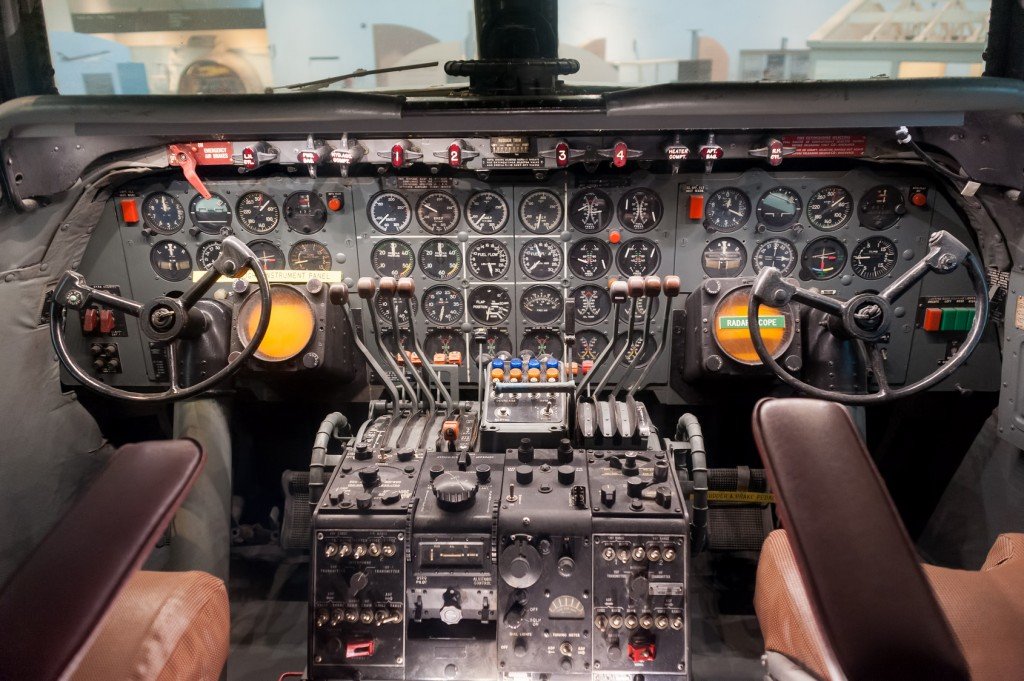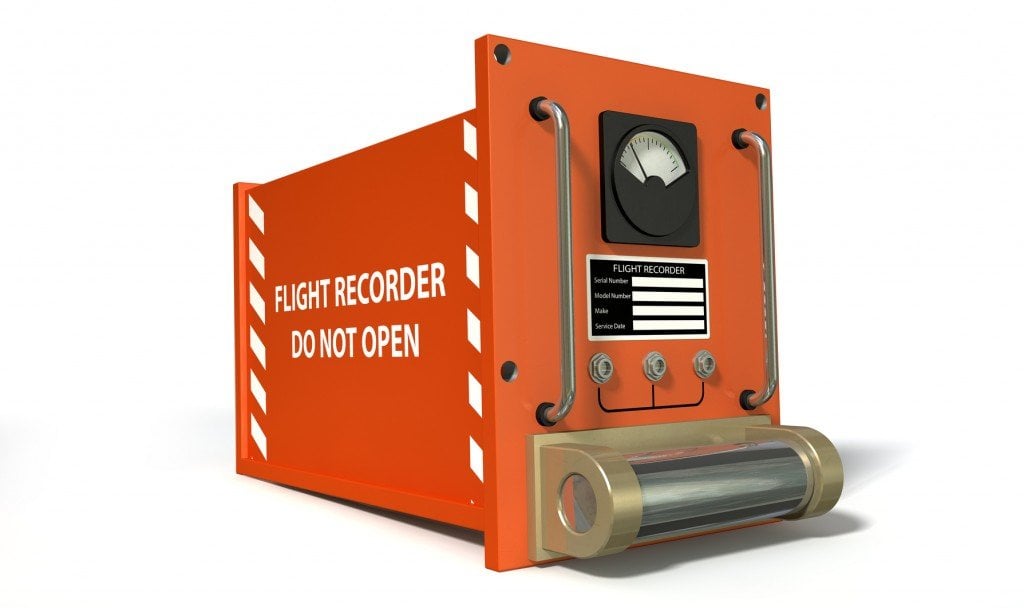We’ve all seen a movie or two where a plane has mysteriously disappeared or crashed somewhere in the ocean, sending officials and rescue crews into a frenzy to find something called the black box.


It has an almost mythical quality to it, and while in the real world it is unfortunately associated with tragedy, it is a fascinating device that has allowed us to be safer and more informed as air travel continues to grow each year.
People talk about black boxes as though they hold all the secrets of an airplane (and in some ways, they do!), but what functions do they actually perform? Do we really need them? And perhaps most importantly… are they even black?
The Reason We Need a Black Box
Before we get too far into the subject, it should be known that every commercial and corporate aircraft does not have one “black box”, but TWO! There are two distinct and separate components that all “black boxes” contain – a Flight Data Recorder and a Cockpit Voice Recorder. If a plane should go down for whatever reason, an explanation is essential, both in order to know the truth and prevent similar catastrophes from happening in the future.
If a flight loses its communication capabilities, for example, and is unable to radio in a Mayday signal or any sign that it’s in distress, when it crashes, the reason behind it would remain a mystery. Fortunately, these intensely durable black boxes act as the memory banks of every single flight, ensuring that when they are recovered, they can reveal the secrets of an aircraft’s functions and pilot actions.
What Do The Black Boxes Do?
As mentioned above, every “black box” consists of two things: a Flight Data Recorder (FDR) and a Cockpit Voice Recorder (CVR), but there is another key device that can’t be overlooked – the Flight Data Acquisition Unit (FDAU), which is typically found beneath or within the cockpit. This unit is the intake for all the sensors on the ship; from there, the massive amounts of flight data are sent to the FDR and CVR.

Cockpit interior… a bit more complicated than driving a car (Photo Credit: Alexey Rotanov / Fotolia)
The FDR records all of the plane’s functions and measurements that occur throughout the flight, such as altitude, speed, heading, velocity, and other standard information. Fortunately, as airplane technology has advanced, so too has FDR tech, and these impressive recorders also document experiences of turbulence, wing flap movement, and minute alterations in flight patterns, which makes it possible to construct realistic simulations of a crash.
The top-of-the-line recorders, like those used by Boeing, can document roughly 150,000 different parameters, adding up to multiple terabytes of data on every flight. This wealth of information is invaluable for specialists who investigate aviation crashes, because it helps them determine the root cause of accidents and system failures, advise relevant authorities of their findings, and help keep our skies safe.
The second component, the CVR, also serves a crucial function. Although many aspects of modern aviation are automatically controlled, the actions and decision-making of a pilot are still essential for flight safety. The CVR records all communication and dialogue between the crew and an audio recording of the cockpit. However, this is about more than pilot accountability. Trained investigators are able to listen to the precise audio recordings for alarms, unusual noises, and changes in ambient noise, in addition to the communications and interactions of the crew with one another and with ground control in the moments before a crash.

In the panicked moments of a potential disaster, accurate timing and documenting the order of events is not the pilot’s top priority, but the CVR does it for them. Most CVR record audio input from 3-4 microphones strategically placed in the cockpit and pilot helmet, and usually only record the previous 30 minutes of information. In order to save space and avoid replacing black box memory storage after every flight, the recorders begin taping over old data during the course of normal flight.
Together, the CVR and FDR provide a wide range of clues as to what happened in the minutes and seconds before a crash, as well as why, where, and when it occurred. When solving these tragic mysteries, where other clues often sink to the bottom of the ocean floor, clues are priceless!
Speaking of Ocean Floors… How Do Black Boxes Stay Intact?
The point of black boxes is to survive the crash and be recovered, so that investigators can find answers, but that must be pretty hard on the bottom of the sea. Fortunately, black boxes are equipped with an Underwater Locator Beacon, which begins pinging its location once it comes in contact with water. Furthermore, despite the name, black boxes are typically bright orange, making them much easier to spot underwater.
However, as most of us know, water pressure can be a real killer, and plane crashes are typically rather violent, so what makes black boxes so indestructible?
The solid-state memory boards used to record the information in these devices have no moving parts, which makes it very difficult to corrupt or compromise the recording, even during an intense impact. Their hefty price tag (usually between $10,000-$15,000) also hint at their complexity and durability.
Black boxes are built like tiny tanks, with an outer shell of titanium to resist pressure, a second layer of insulation, and an inner shell of heat and fire-resistant material. The boxes are also tested under some truly extreme conditions. Some of the best black boxes on the market can withstand a 2,000-degree fire for more than an hour, water pressures up to 14,000 feet (deeper than the HMS Titanic!), and can operate in temperatures ranging from -70 to 160 degrees Fahrenheit.
These impressive recording devices are built to withstand horrific forces that can tear a fuselage apart, all for the goal of solving mysteries, providing closure, and improving flight safety for current and future generations
source:www.scienceabc.com



No comments:
Post a Comment